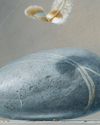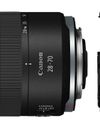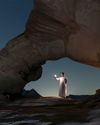
The decision you face when buying a Canon DSLR vs a mirrorless camera can be tricky. They both take the same pictures, but they use very different designs. Some say that the DSLR is dead and that mirrorless cameras are the future, but Canon continues to release new DSLRs, so it’s clear they don’t think so. In late 2019 Canon launched the EOS 90D, for example.
This is a DSLR which can do anything Canon’s mirrorless cameras can, right down to Live View autofocus and video capabilities. On top of that the flagship EOS camera for professionals – the imminent EOS-1D X Mark III – is a DSLR, not a mirrorless camera.
The fact is, both camera designs have pros and cons, so we will explain what the differences are, whether they are likely to matter to you, and which type of camera might be best for what you want to photograph. There are lots of myths about DSLRs vs mirrorless cameras that need busting, particularly the idea that mirrorless cameras are somehow intrinsically better. In reality, it’s not always about what these different types of camera can do, as much as the type you prefer to use.
So, over the next ten pages we’ll take a look at key areas of the technology and design to try and answer that DSLR vs mirrorless question once and for all…
The mirrorless revolution
Some say DSLRs are dead and mirrorless cameras are the future, but it’s a more complicated than that
This story is from the {{IssueName}} edition of {{MagazineName}}.
Start your 7-day Magzter GOLD free trial to access thousands of curated premium stories, and 9,000+ magazines and newspapers.
Already a subscriber ? Sign In
This story is from the {{IssueName}} edition of {{MagazineName}}.
Start your 7-day Magzter GOLD free trial to access thousands of curated premium stories, and 9,000+ magazines and newspapers.
Already a subscriber? Sign In

The Art of Copying Art - James Paterson shows you how to use your Canon gear to capture artwork and paintings the right way with simple camera and lighting skills
Whether you want to capture a painting like the above, digitise old prints or reproduce any kind of canvas, there's real skill in capturing artwork with your camera. Not only do you need the colours to be accurate, you also need to master the spread, angle and quality of the light to minimise glare and show the work at its best.This painting by the artist Bryan Hanlon has a wonderfully subtle colour palette. To reproduce the painting in print and digital form, it needs to be captured in the right way.

Fright night
Canon photographer and digital artist Alexander loves to craft incredible fantasy scenes with a spooky horror twist

Sharpen your shots with DPP
Sharpening a digital image also increases contrast at the edge of details

CANON ImagePrograf PRO-1100
Deeper blacks, better bronzing, greater lifespan and 5G Wi-Fi -Canon's new printer is full of new tech, says

Canon's new 'kit lens' is actually a half-price f/2.8 trinity lens!
The Canon RF 28-70mm F2.8 IS STM lacks a red ring, but borrows premium features from its L-series siblings

DREW GIBSON
Pro motorsports photographer Drew on why he hasn't (yet) switched to Canon's mirrorless system, why old-school techniques can be the most reliable, and the lessons learned from more than a decade shooting the world's biggest car brands

Up in smoke
Make a smoky shape in Affinity Photo and get to grips with the amazing Liquify Persona under the guidance of James Paterson

Expand your creativity with Generative Fill
Photoshop's Al-powered feature brings revolutionary new tools to image editing. James Paterson reveals all...

Turn your images into vintage postcards
Wish you were here? Sean McCormack explains how you can give your summer photographs a vintage postcard look

The Angel Malibu
Light painting an American movie producer in the Wadi Rum Desert in Jordan was a highly unlikely evening out for David!